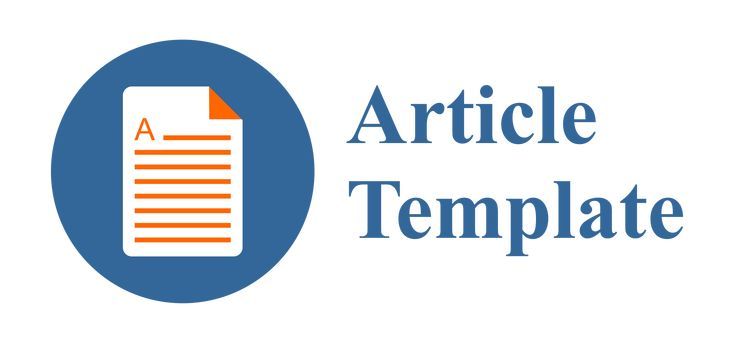Implementation and Evaluation of User Experience on Mobile Augmented Reality Technology-Based Brochure Applications
DOI:
https://doi.org/10.29408/edumatic.v5i2.3404Keywords:
Extreme Programming Development Method, Mobile Augmented Reality, University Promotional Media, User Experience EvaluationAbstract
Along with the spread of the COVID-19 virus which has an impact on new student admissions at various universities in Indonesia. This impact was also felt at the Politeknik Negeri Banjarmasin (POLIBAN) with the decline in the number of registrants and the public's interest in continuing higher education. So we need a promotion that is not monotonous and must be innovative. Various kinds of technology have been created to support and facilitate all activities in various fields, one of which is in the field of promotional media. Promotion is very important for a university to offer or show the facilities and infrastructure contained in the university and show its quality. The purpose of this study is to implement mobile augmented reality technology as a POLIBAN promotional media solution and evaluate the user experience of the application. The research method used is the Extreme Programming (XP) development method and a technique for evaluating user experience using the User Experience Questionnaire (UEQ). The results of the research conducted based on the results of the implementation stated that functionally all the features offered by the application can function properly and the results of the evaluation of user experience as a non-functional assessment of 50 respondents with an average value of 2.87 with an excellent predicate.
References
Afendi, A., Gustia, I., & Maleha, N. Y. (2021). Pengaruh Virus Corona (Covid-19) Terhadap Penerimaan Mahasiswa Baru di Universitas Indo Global Mandiri. Jurnal Ilmiah Mahasiswa Ekonomi Syariah, 1(1), 75–82.
Azuma, R. T. (1997). A Survey of Augmented Reality. In Presence: Teleoperators and Virtual Environments 6, 4(1997), 355–385.
Hermawan, L., & Hariadi, M. (2015). Pemanfaatan Augmented Reality sebagai Media Informasi Kampus Menggunakan Brosur. Seminar Nasional Teknologi Informasi Dan Komunikasi (SENTIKA), Sentika, 81–88.
Indrawati, B. (2020). Tantangan dan Peluang Pendidikan Tinggi Dalam Masa dan Pasca Pandemi Covid-19. Jurnal Kajian Ilmiah, 1(1), 39–48.
Kato, H., & Billinghurst, M. (1999). Marker Tracking and HMD Calibration for a Video-Based Augmented Reality Conferencing System. Proceedings of The 2nd IEEE and ACM International Workshop on Augmented Reality (IWAR), 85–94.
MedIndo. (2020). Pengaruh Korona di Pendidikan Tinggi. Media Indonesia, 1–6.
Murnane, T., & Reed, K. (2001). On the Effectiveness of Mutation Analysis as a Black Box Testing Technique. Proceedings of The Australian Software Engineering Conference (ASWEC), 12–20.
Nadira, Z., Sujaini, H., & Pratiwi, H. S. (2016). Implementasi Augmented Reality pada Brosur Teknik Informatika Universitas Tanjungpura menggunakan Metode Marker. Jurnal Sistem Dan Teknologi Informasi (JUSTIN), 1(1), 1–6.
Nidhra, S., & Dondeti, J. (2012). Black Box and White Box Testing Techniques - A Literature Review. International Journal of Embedded Systems and Applications (IJESA), 2(2), 29–50. https://doi.org/10.5121/ijesa.2012.2204
Ostrand, T. (2002). Black-Box Testing – in Book Encyclopedia of Software Engineering. United States: Wiley.
Pressman, R. S. (2010). Software Engineering: A Practitioner’s Approach. McGraw-Hill Education.
Rachmanto, A. D., & Noval, M. S. (2018). Implementasi Augmented Reality sebagai Media Pengenalan Promosi Universitas Nurtanio Bandung menggunakan Unity 3D. Jurnal Teknologi Informasi Dan Komunikasi, 9(1), 29–37.
Santoso, H. B., Schrepp, M., Isal, R. Y. K., Utomo, A. Y., & Priyogi, B. (2016). Measuring User Experience of the Student-Centered e-Learning Environment. The Journal of Educators Online (JEO), 13(1), 58–79.
Subandi, Joniriadi, Syahidi, A. A., & Mohamed, A. (2020). Mobile Augmented Reality Application with Multi-Interaction for Learning Solutions on the Topic of Computer Network Devices (Effectiveness, Interface, and Experience Design). Proceedings of The 3rd International Conference on Vocational Education and Electrical Engineering (ICVEE), 4–10.
Suryadi, D. (2011). Promosi Efektif. Jakarta: PT. Suka Buku.
Syahidi, A. A., Subandi, Azura, A. N., & Hastuti, I. (2021). Virtual Museum Tour in Wasaka Banjarmasin to Introduce the Collection of Leaders and Local Heroes Based on Mobile Augmented Reality Technology in the New Normal Era. COMPILER Journal, 10(1), 1–10.
Syahidi, A. A., Subandi, & Mohamed, A. (2020). AUTOC-AR : A Car Design and Specification as a Work Safety Guide Based on Augmented Reality Technology. Jurnal Pendidikan Teknologi Dan Kejuruan, 26(1), 18–25.
Syahidi, A. A., Supianto, A. A., & Tolle, H. (2019). Design and Implementation of Bekantan Educational Game ( BEG ) as a Banjar Language Learning Media. International Journal of Interactive Mobile Technologies (IJIM), 13(03), 108–124. https://doi.org/10.3991/ijim.v13i03.9257
Syahidi, A. A., Tolle, H., Supianto, A. A., & Arai, K. (2018). BandoAR: Real-Time Text Based Detection System Using Augmented Reality for Media Translator Banjar Language to Indonesian with Smartphone. 2018 IEEE 5th International Conference on Engineering Technologies and Applied Sciences (ICETAS), 1–6. https://doi.org/10.1109/ICETAS.2018.8629251
Syahidi, A. A., Tolle, H., Supianto, A. A., & Hirashima, T. (2019). Educational Media Design for Learning Basic Programming in Branching Control Structure Material Using Problem-Posing Learning Model. Kinetik: Game Technology, Information System, Computer Network, Computing, Electronics, and Control Journal, 4(4), 325–336.
Syahidi, A. A., Tolle, H., Supianto, A. A., Hirashima, T., & Arai, K. (2020). Interactive M-Learning Media Technology to Enhance the Learning Process of Basic Logic Gate Topics in Vocational School and Engineering Education. International Journal of Engineering Education (IJEE), 2(2), 50–63.
Downloads
Additional Files
Published
How to Cite
Issue
Section
License
All articles in this journal are the sole responsibility of the authors. Edumatic: Jurnal Pendidikan Informatika can be accessed free of charge, in accordance with the Creative Commons license used.

This work is licensed under a Lisensi a Creative Commons Attribution-ShareAlike 4.0 International License.




